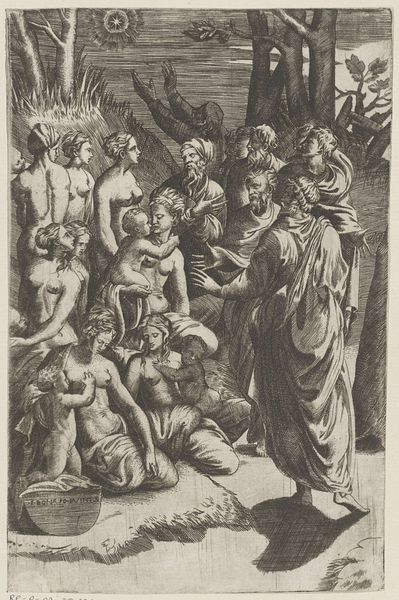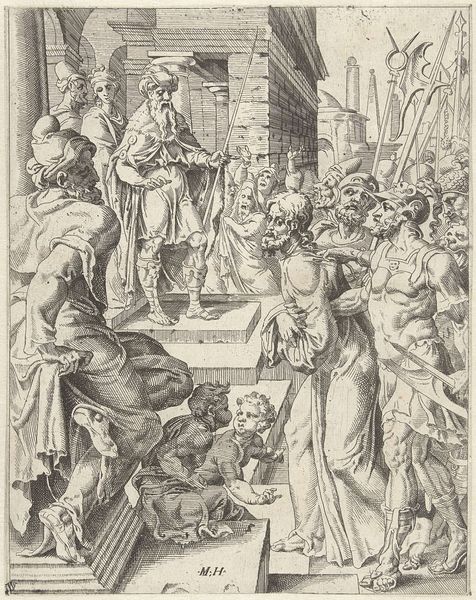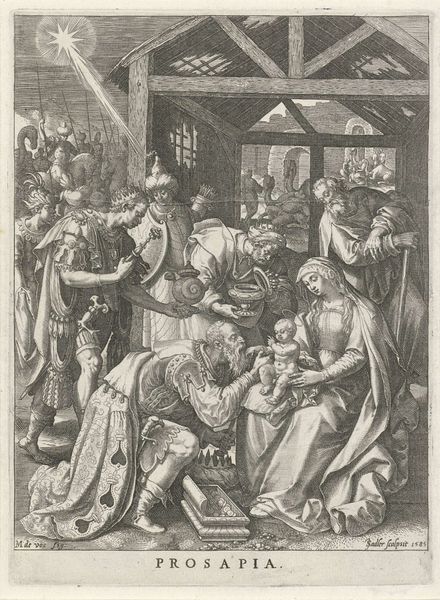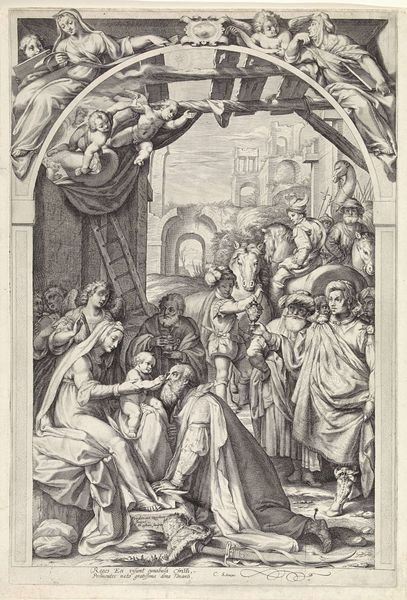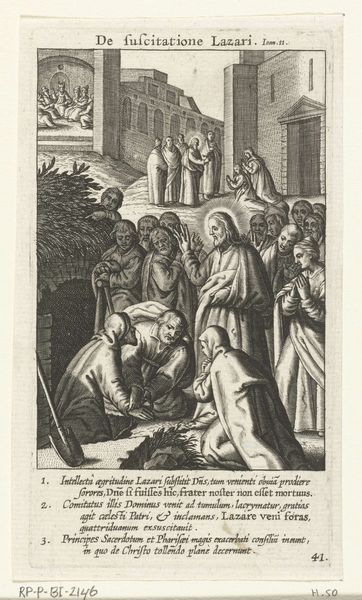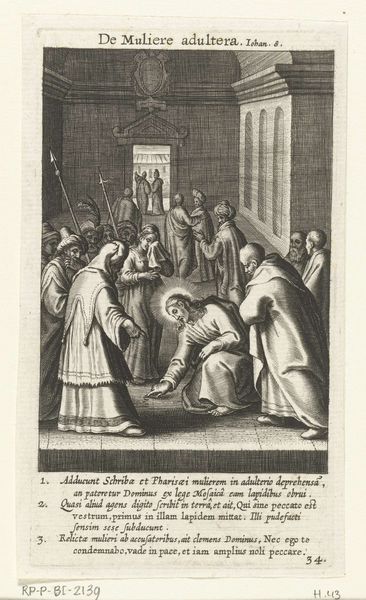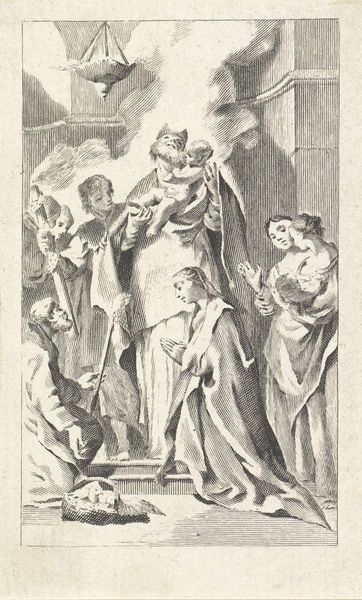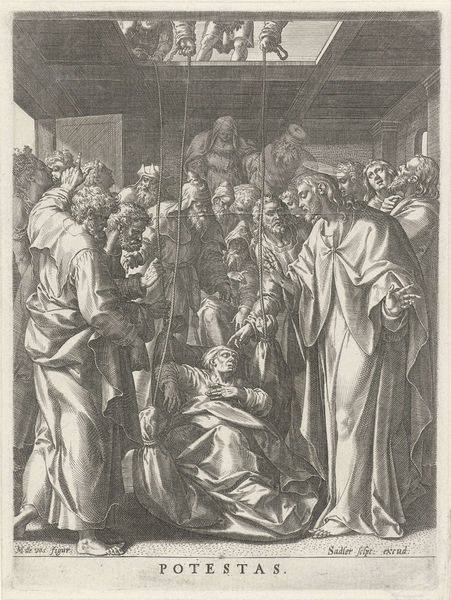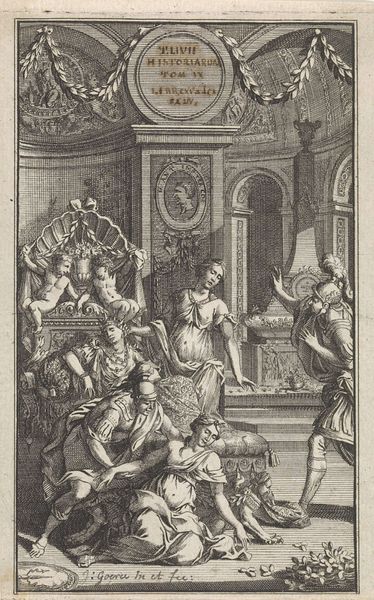
engraving
#
baroque
#
old engraving style
#
figuration
#
history-painting
#
engraving
Dimensions: height 111 mm, width 64 mm
Copyright: Rijks Museum: Open Domain
Curator: This engraving, titled "Meisje voor priester geleid" or "Girl Led Before a Priest", created around 1740 by Giovanni Cattini, depicts a scene brimming with tension and ceremony. Editor: My immediate impression is its stark formality. The stark contrast achieved solely through line work—it projects a solemn, almost oppressive atmosphere, don't you think? Curator: Indeed. Note how the artist uses a complex network of hatching and cross-hatching. Observe the materiality, it must have taken hours. Each line meticulously carved. This level of detail elevates the narrative to something akin to history painting despite its form. The labor invested reveals devotion to its subject. Editor: And what of the symbolism, the composition? The priest, elevated both physically and metaphorically, dominates the scene. The female figure at the bottom, seemingly in a state of undress, contrasts sharply with the robed figures above. Is Cattini commenting on societal hierarchy, perhaps? Curator: Perhaps. But also, observe the dynamic play of gazes: everyone’s looking towards a single ritual moment with concentrated focus on some ritual object hanging from that young man’s hand above the seated female. Consider the formal rhythm, where poses contrast with patterns formed by draped textiles to heighten the psychological impact. Editor: Yet consider the material reality. This wasn't created in isolation. The metal plate itself had to be crafted, treated, engraved using specialist tools... each stage informed by historical practices embedded within workshop traditions and religious structures of that period. Was it created on commission, and what controlled its distribution to what audiences? Curator: All are insightful points. Cattini's utilization of visual cues, his handling of composition and expression create a microcosm ripe with thematic contrasts of youth, power, faith. The engraving, in its formal arrangement, provides commentary beyond the presented subject matter. Editor: And examining these production aspects highlights that such engravings acted both as artistic products and propagative tools representing hierarchies while reinforcing social doctrines. We need both perspectives for fuller insights. Curator: I appreciate the layered view offered, highlighting how socio-political circumstances influence both making and receiving meanings inside visual forms. It enriches our experience, moving away from seeing these as pure depictions towards more significant sites in broader historical dynamics.
Comments
No comments
Be the first to comment and join the conversation on the ultimate creative platform.
